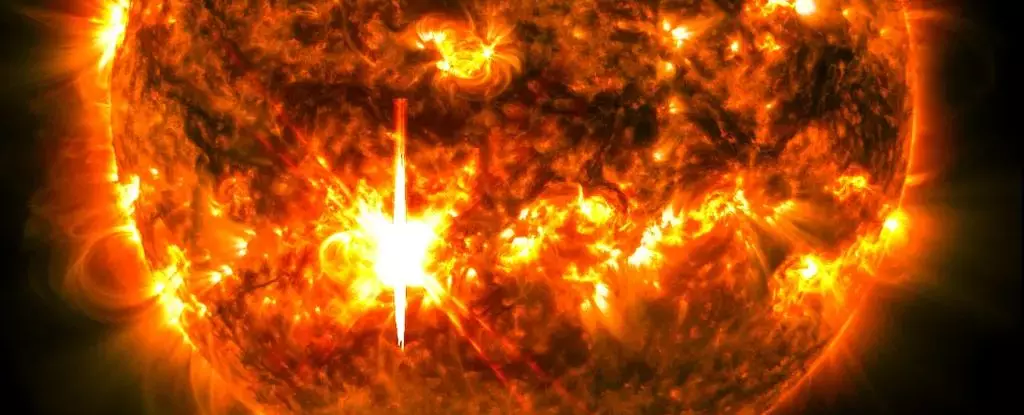As the calendar flipped to October, our Sun unveiled a spectacular display of cosmic energy, astonishing enthusiasts and scientists alike. On October 1, an X7.1 solar flare erupted from a dynamic sunspot region, marking it as the second most vigorous flare in the current solar cycle. This flare not only ranks among the 30 most powerful solar events of the past three decades, but it also sets the stage for a mesmerizing dance of solar particles across the Solar System. While this celestial event appears intimidating, scientists assure us that we are not facing any direct threat—yet the implications of such solar phenomena can still be felt on Earth.
Understanding solar flares and coronal mass ejections (CMEs) requires a glimpse into the workings of our star. Solar flares, sudden bursts of radiation, are caused by the tumultuous interplay of magnetic fields on the Sun’s surface. These eruptions are typically associated with sunspots—dark regions that represent temporary anomalies in the Sun’s magnetic field. As magnetic polarities of these sunspots collide, they create conditions ripe for energy release. The result? A flash of electromagnetic radiation that reaches Earth at the speed of light and may cause temporary disturbances in radio communications.
CMEs, on the other hand, represent a more substantial physical event. They discharge billions of tons of solar particles into space, intertwining magnetic fields that travel through the vastness of space toward Earth. Upon encountering our planet’s magnetic field, these particles can lead to geomagnetic storms, characterized by the disturbance of Earth’s magnetosphere which primarily affects the upper atmospheric layers. This interaction sets the stage for one of nature’s most breathtaking displays: the auroras, known colloquially as the Northern and Southern Lights.
The recent solar activity was generated by sunspot region AR 3842, a complex structure identified as a Beta-Gamma-Delta region due to its intricate magnetic composition. These types of sunspots are known for their propensity to produce significant solar flares due to their tightly interwoven magnetic fields of opposing polarities. As AR 3842 continues its journey across the solar disk, it remains in a position that enhances its ability to emit solar flares directed toward Earth.
Just hours after the initial X7.1 flare, this sunspot emitted an M3.3 class flare, highlighting its potential for ongoing solar activity. These eruptions create a cocktail of cosmic phenomena that pulse through our solar system, and while flares at lower intensity levels, such as M-class flares, can cause disruptions to radio communications on the sunlit side of Earth, they pale in comparison to the more substantial impacts of a significant CME.
With predictions from the NOAA’s Space Weather Prediction Center indicating potential geomagnetic storms rated between G3 and G4 levels on the Kp Index over the days following the initial flare, there is great anticipation for the auroras that might grace our skies. This forecast suggests a possibility of dramatic light displays that could stretch across vast regions. Such events promise a chance to witness the incredible effects of solar activity directly—a true gift from our nearest star.
Adding to the excitement is the fact that 2023 has been a particularly fruitful year for aurora enthusiasts. If the flares from AR 3842 lead to substantial CMEs, observers might experience a light show that rivals some of nature’s most breathtaking visual phenomena. Past solar cycles have yielded dazzling displays that etch into memory, and the potential for a repeat performance represents an exhilarating opportunity for sky watchers.
Each solar eruption stands as a poignant reminder of the dynamic and sometimes violent nature of our universe. While the dazzling auroras and geomagnetic storms are captivating phenomena, they also reflect the intricate mechanisms of stellar activity that occur at vast distances yet have tangible effects on our planet. As we navigate through October and the accompanying cosmic displays, one must appreciate the interconnectedness of our solar system. With both scientists and enthusiasts looking skyward, this season of solar splendor offers a chance not only for admiration but also for deeper understanding of the forces that shape our celestial neighborhood. As always, we look forward to seeing what else our Sun has in store as we continue through this exciting period of solar activity.

